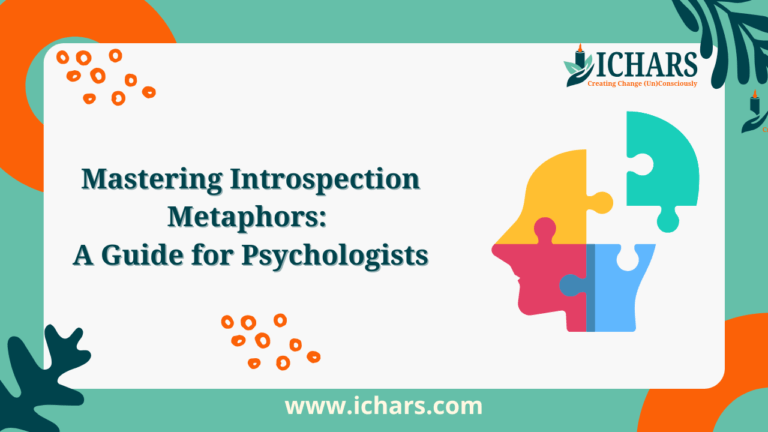Introspection is a cornerstone of personal growth and psychological therapy, providing individuals with the opportunity to understand their thoughts, emotions, and behaviors on a deeper level.
But how can psychologists guide their clients in making the most of their self-discoveries?
Enter introspection metaphors – an imaginative yet structured approach that helps clients delve deeper into their insights. In this article, we’ll explore how introspection metaphors can transform therapy sessions by providing clients with new perspectives and actionable clarity.
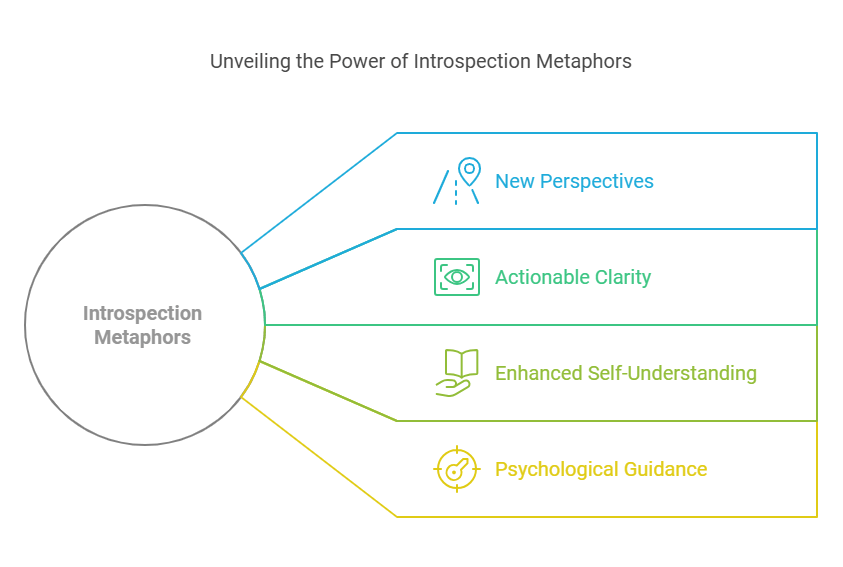
Here’s a video that complements the insights shared below:
What Are Introspection Metaphors?
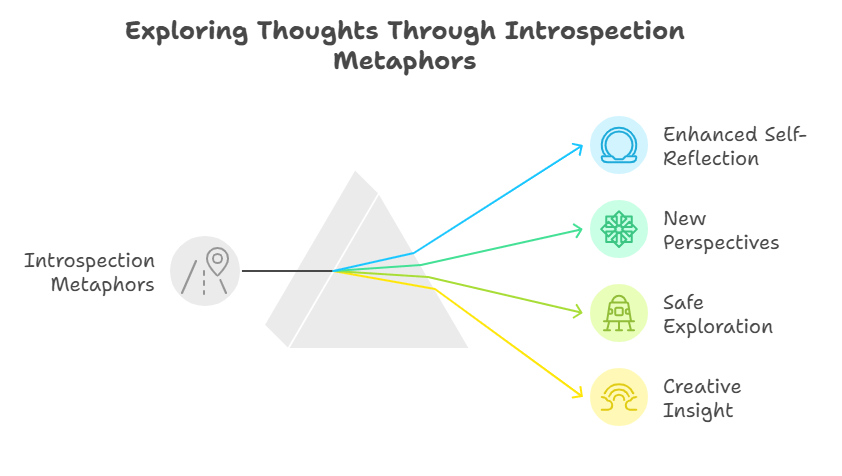
An introspection metaphor is a guided imaginative journey designed to help clients explore their thoughts and insights more deeply. Imagine it as walking through a mental museum where each exhibit represents a layer of understanding about a particular realization or emotion.
This approach enhances self-reflection and allows clients to uncover new perspectives in a safe, creative, and meaningful way.
The Step-by-Step Process of Using Introspection Metaphors
Understanding and applying introspection metaphors effectively requires a structured approach. A clear process ensures that both the therapist and the client can navigate this imaginative journey with focus and purpose, leading to more impactful results.
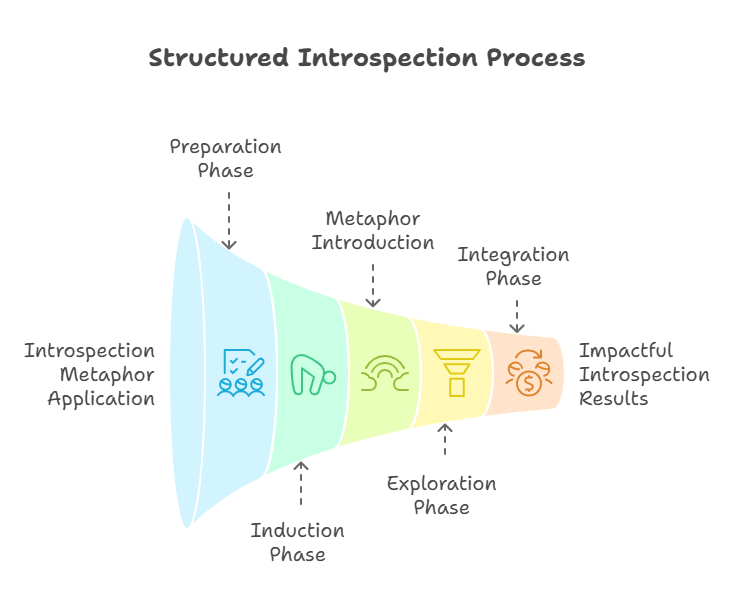
1. Preparation
- Objective: Define the insight or theme to explore.
- How to Begin:
- Identify a breakthrough or recurring theme from the client’s recent sessions.
- Ensure the topic is significant and personally meaningful to the client.
- Pro Tip: Clearly articulate the goal of the introspective journey to set the stage for success.
2. Induction into a Hypnotic State
- Objective: Help the client achieve a relaxed and receptive mental state.
- Techniques:
- Deep breathing exercises.
- Progressive muscle relaxation.
- Guided imagery to evoke calmness.
- Why This Matters: A relaxed mind is more open to exploring complex insights without resistance or distractions.
3. Introducing the Introspection Metaphor
- Objective: Create an imaginative framework for introspection.
- Example Scenario:
- Invite the client to picture a serene museum filled with exhibits representing their insight.
- Encourage them to notice specific details – textures, sounds, and visuals.
- Engagement Tip: Personalize the metaphor. If the client resonates more with nature, the museum can be replaced by a tranquil forest or garden.
4. Exploration and Introspection
- Objective: Encourage a deep dive into the insight.
- How to Facilitate:
- Ask open-ended questions as the client explores: “What do you see?” “How does this make you feel?”
- Encourage sensory awareness to enrich their imaginative experience.
- Outcome: Clients gain fresh perspectives and identify potential applications for their insights.
5. Integration and Reflection
- Objective: Consolidate the learnings from the metaphorical journey.
- Steps:
- Gradually guide the client out of the hypnotic state.
- Facilitate a discussion: “What stood out to you?” “How can you apply this understanding?”
- Ensure clients leave with actionable insights.
- Why This Is Critical: Reflection cements the experience, turning abstract insights into practical tools for change.
Practical Tips for Using Introspection Metaphors
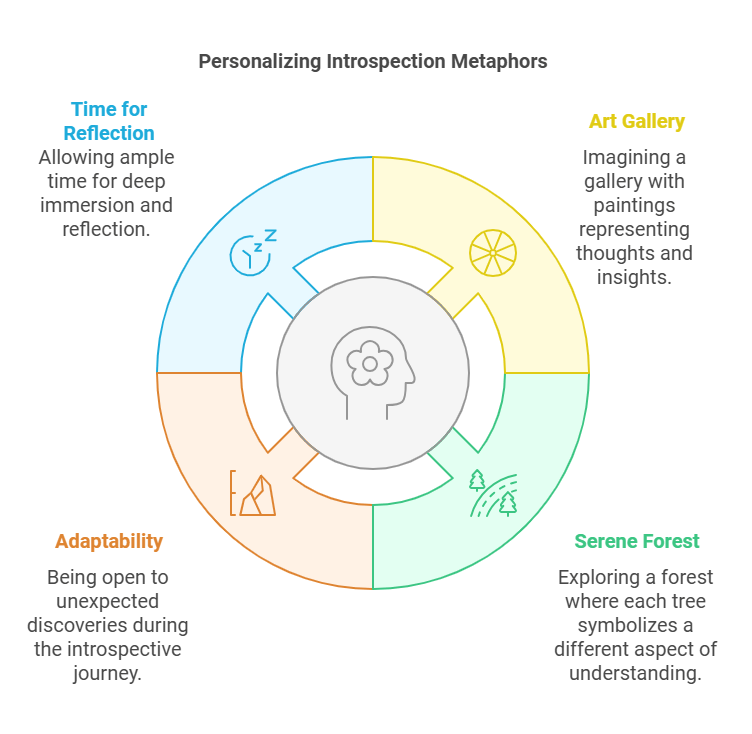
- Personalization: Tailor the metaphor to resonate with the client’s unique interests and experiences. For example, if your client loves art, you could ask them to imagine a gallery filled with paintings that represent their thoughts. Alternatively, for a nature enthusiast, the metaphor might involve exploring a serene forest, with each tree symbolizing a different aspect of their insight.
- Flexibility: Be prepared to adapt as the client explores; their journey may lead to unexpected yet meaningful discoveries.
- Patience: Allow sufficient time for the client to immerse themselves and fully benefit from the process.
Why Introspection Metaphors Matter
Introspection metaphors are not just imaginative exercises; they are transformational tools. For instance, consider a client who visualizes their insight as a painting in an art gallery.
During the exercise, they notice specific colors and details they hadn’t thought about before, which leads to an unexpected realization about a long-held belief. This kind of vivid exploration can bridge the gap between awareness and actionable change. By engaging both the conscious and subconscious mind, these metaphors:
- Enhance emotional clarity.
- Facilitate a deeper understanding of personal challenges and strengths.
- Empower clients to uncover actionable insights that drive meaningful change.
Ready to Elevate Your Practice?
Introspection metaphors are just one of the many advanced techniques taught in our Cognitive Hypnotic Psychotherapy Diploma Program. This program equips psychologists with a comprehensive toolkit to integrate cognitive, behavioral, and transformational methods seamlessly.
If you’re ready to take your therapeutic skills to the next level, explore our diploma programs today and discover the difference holistic, client-centered therapy can make.
